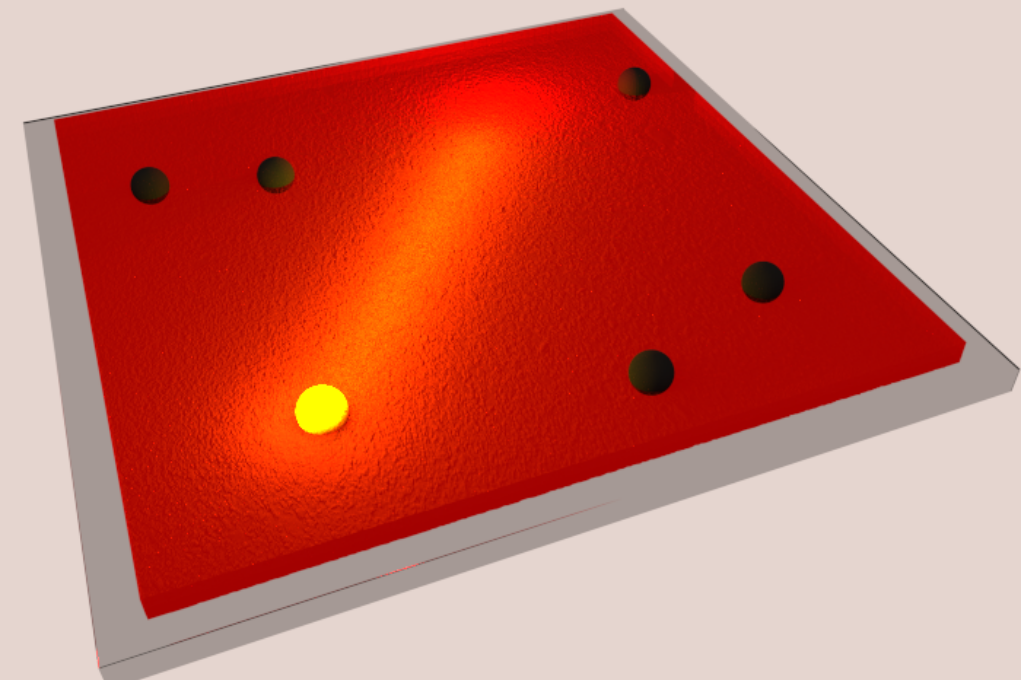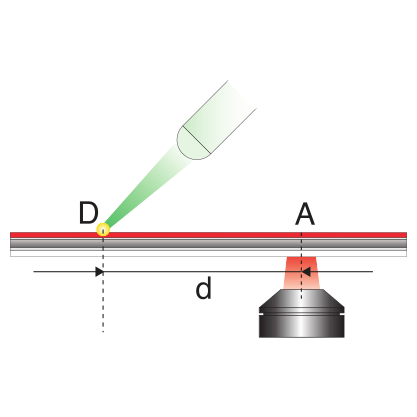Extending the range of intermolecular energy transfer

Energy transfer between molecules is a basic process, observed in many fields spanning from biology to physics. For example, photosynthetic organisms feature efficient intermolecular energy transfer, occurring from donor molecules (light harvesting complexes) to acceptor molecules (reaction centers). However, this process is always limited to a very short range in free space, typically on the order of a few nanometers.
The main result demonstrated in our study is that the energy transfer range can be increased by a factor of almost one thousand using a simple silver mirror. Indeed, the electromagnetic waves involved in the usual process are replaced by guided waves propagating at the interface between the silver surface and the surrounding medium (air or a polymer layer). Such waves, called surface plasmons, carry the energy over large distances (several micrometers for visible light), allowing one to increase the distance from donor to acceptor molecules. Our work proves for the first time that energy transfer range and efficiency can be greatly enhanced using surface plasmons. Efficient long-range energy transfer could lead to breakthroughs in a large variety of applications, going from solar energy harvesting, to the study of biological interactions on scales hardly accessible with current techniques.
This study has been published in Physical Review Letters (Bouchet et al., 2016).
